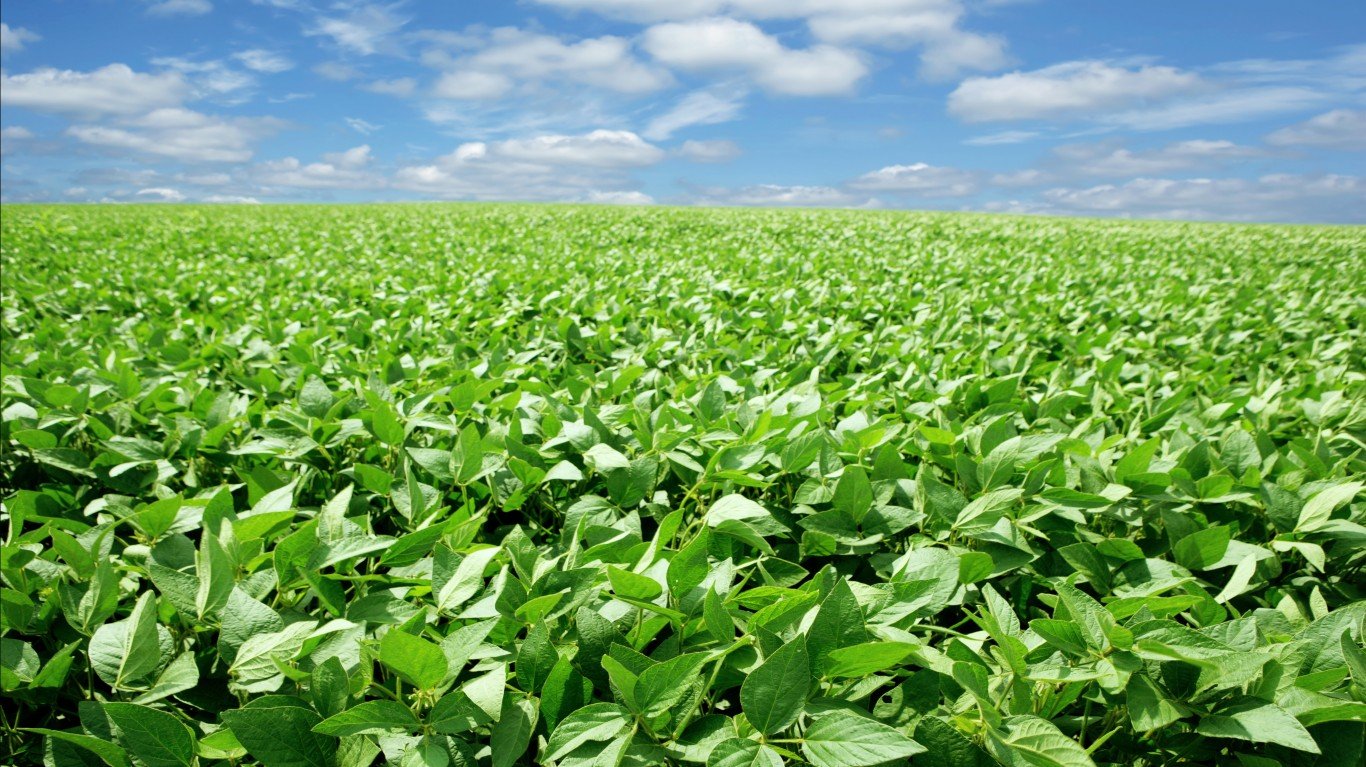
10. Soy Milk
> GHG emissions in kg of CO2 equivalents per kg of food: 1.0
> GHG emissions in kg of CO2 equivalents per nutritional unit: 1.0 per 1 liter of soymilk (~3.3% protein) (18 lowest)
> Land use in sq meters per kg of food: 0.7 (10th lowest)
> Freshwater withdrawal in liters per kg of food: 27.8 (6 lowest)
Looking for a non-daily alternative to cow’s milk? Made from soybeans, the soy milk found on grocery shelves is fortified with vitamins and minerals. U.S. farmers now produce more soy than corn. One glass of soy milk requires 18 gallons of water to produce, compared to 67 gallons for a glass of cow’s milk.
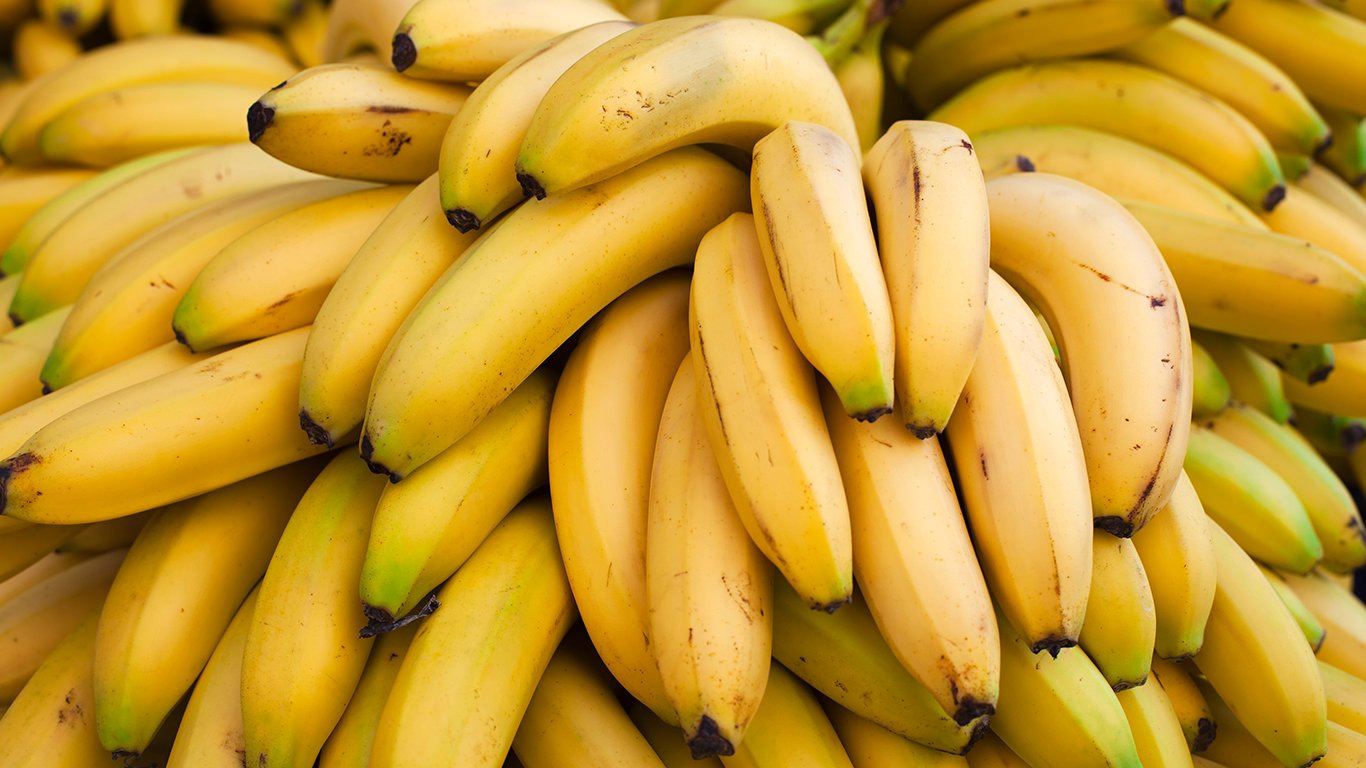
9. Bananas
> GHG emissions in kg of CO2 equivalents per kg of food: 0.9
> GHG emissions in kg of CO2 equivalents per nutritional unit: 0.9 per 1 kg (16 lowest)
> Land use in sq meters per kg of food: 1.9 (19th lowest)
> Freshwater withdrawal in liters per kg of food: 114.5 (12 lowest)
Strangely enough, bananas are actually a berry. Bananas provide a rich source of potassium and pectin, a form of fiber. The fruits are also packed with magnesium and vitamins C and B6. Because of their low carbon footprint, bananas are less harmful to the environment than many other fruits.
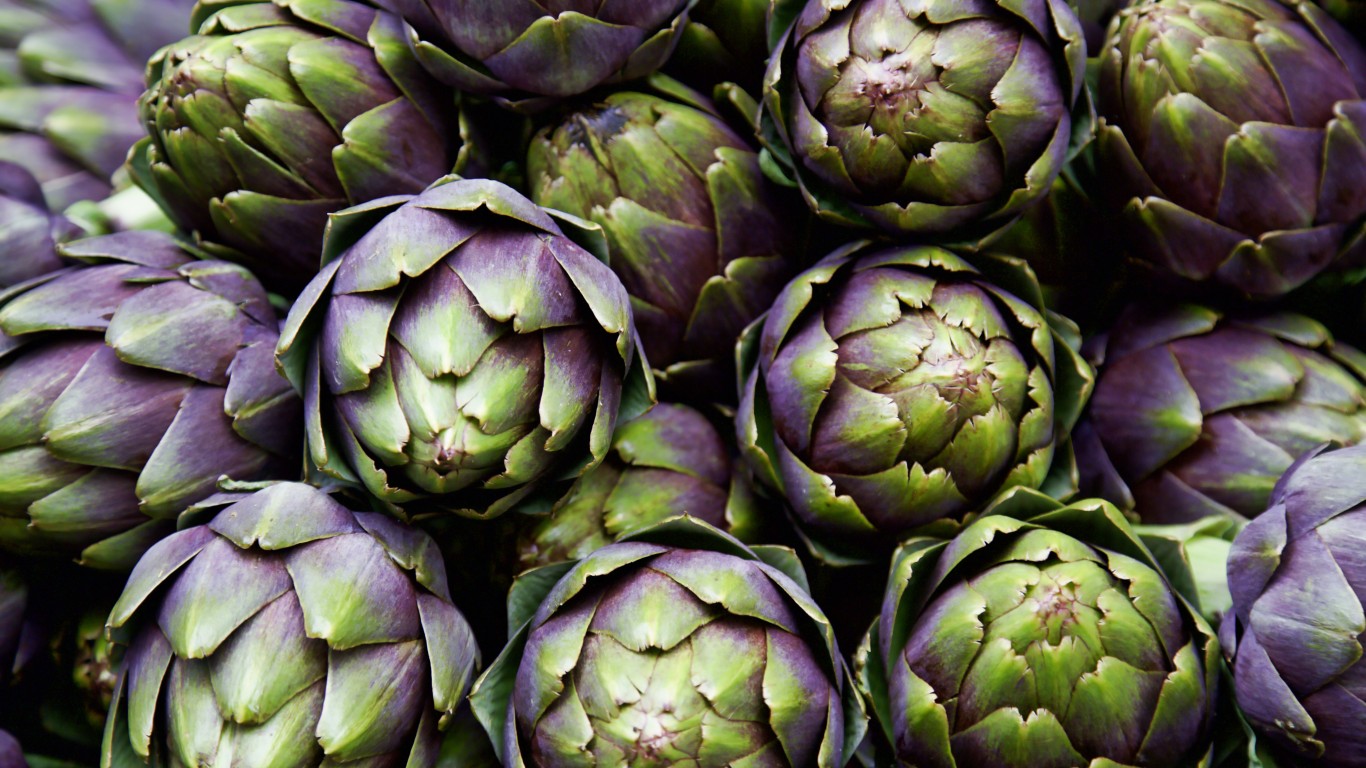
8. Other Vegetables
> GHG emissions in kg of CO2 equivalents per kg of food: 0.5
> GHG emissions in kg of CO2 equivalents per nutritional unit: 0.5 per 1 kg (12 lowest)
> Land use in sq meters per kg of food: 0.4 (15th lowest)
> Freshwater withdrawal in liters per kg of food: 102.5 (11 lowest)
The family of vegetables encompasses so many more varieties than the commonplace peas and carrots. Artichokes, asparagus, okra, cauliflower, avocados, turnips, Brussels sprouts, and bean sprouts are just a few of the veggies you should be trying.
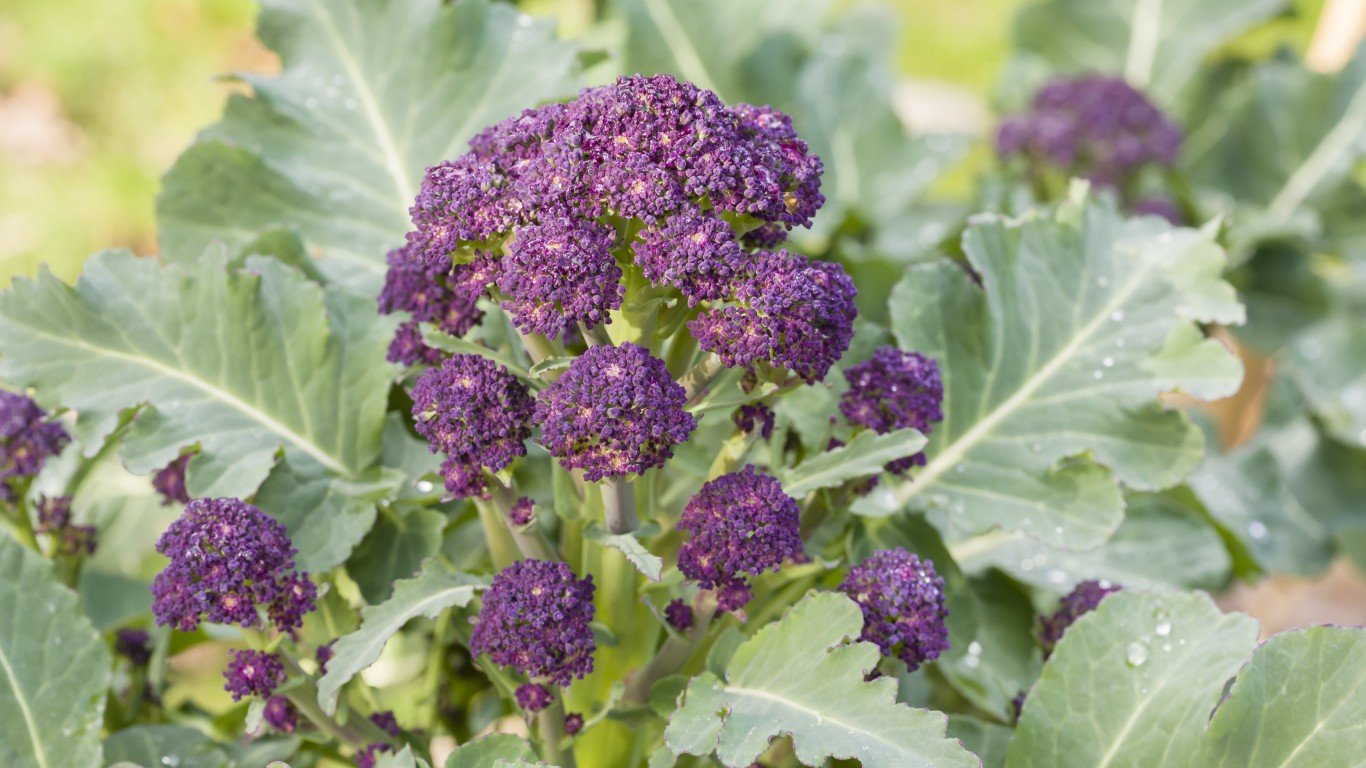
7. Brassicas
> GHG emissions in kg of CO2 equivalents per kg of food: 0.5
> GHG emissions in kg of CO2 equivalents per nutritional unit: 0.5 per 1 kg (11 lowest)
> Land use in sq meters per kg of food: 0.6 (2nd lowest)
> Freshwater withdrawal in liters per kg of food: 119.4 (13 lowest)
Brassicas, also called cruciform vegetables, are plants in the cabbage and mustard family (Brassicaceae). Among its varieties are kale, collards, cabbage, cauliflower, broccoli, Brussels sprouts, kohlrabi, turnips, bok choy, and choy sum. Kale and collards are on the Environmental Working Group’s “Dirty Dozen,” meaning that they retain high pesticide residue. Cabbage and cauliflower, on the other hand, are on the “Clean Fifteen.”
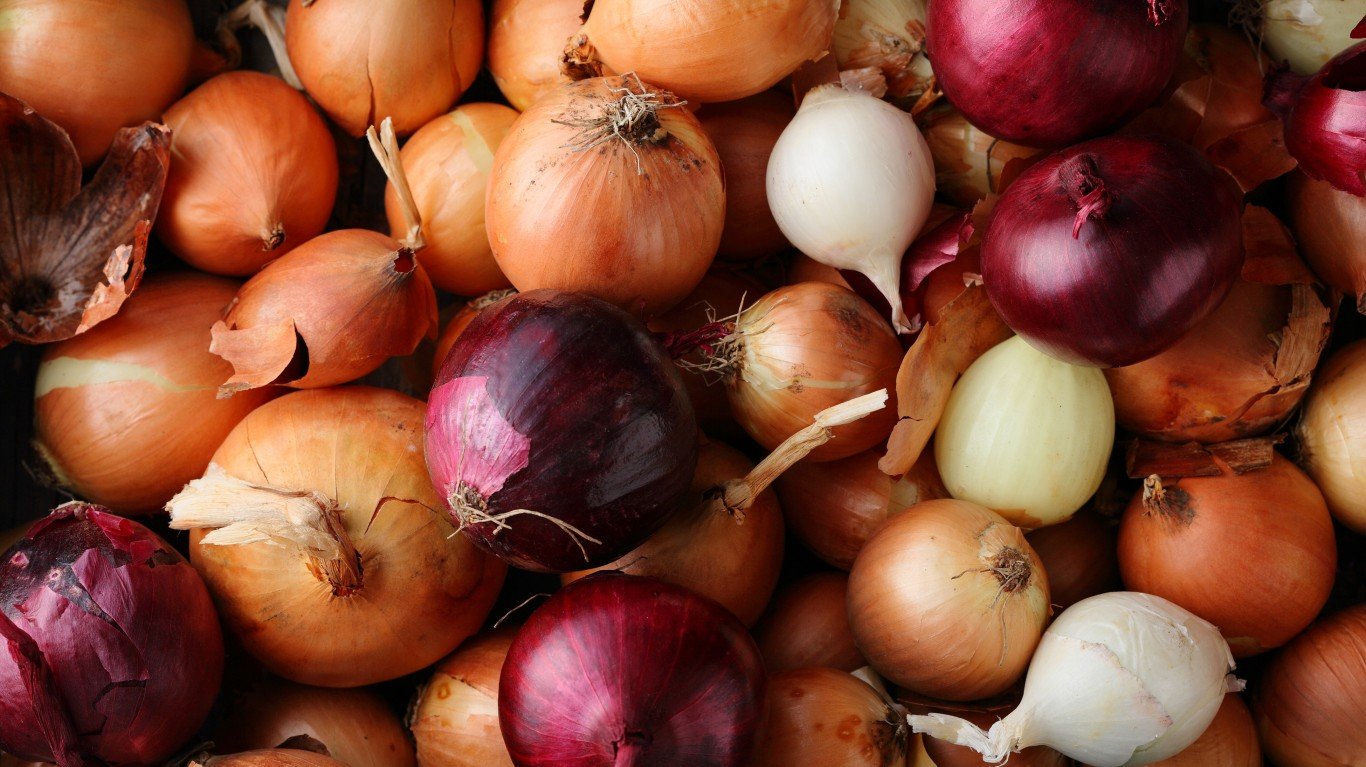
6. Onions & Leeks
> GHG emissions in kg of CO2 equivalents per kg of food: 0.5
> GHG emissions in kg of CO2 equivalents per nutritional unit: 0.5 per 1 kg (10 lowest)
> Land use in sq meters per kg of food: 0.4 (4th lowest)
> Freshwater withdrawal in liters per kg of food: 14.3 (3 lowest)
Onions and leeks both add flavor to cooking, with leeks providing a mild taste than sweet or pungent onions. Both are members of the Allium family, like garlic. Leeks are a cold resistant crop and can withstand many frosts. Dry onions can be stored for long periods. Onion production is relatively sustainable, with less impact on the water, air, land, and soil.






